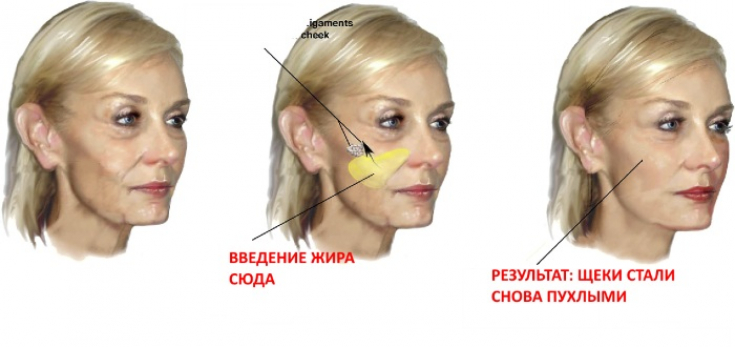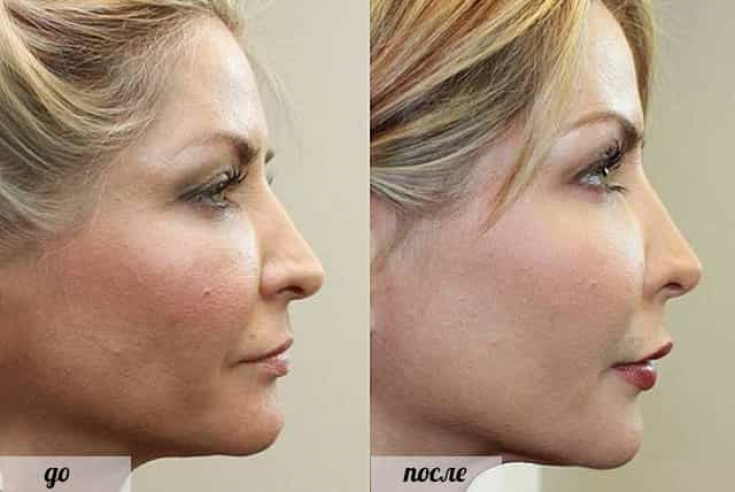In recent years, lipomodeling has gained significant popularity in the field of aesthetic services. No wonder, because lipofilling – it is a low-traumatic, safe procedure that does not require long-term preparation and does not have serious complications.
Lipomodelling is widely used not only for body shaping, but also for face reconstruction and rejuvenation. Currently, face lipofilling – it is an advantageous alternative to various fillers or other anti-aging and corrective surgeries.
In this article, read the answers to the most common questions about the lipomodeling procedure, in particular facial lipofilling.
Lipomodelling: the benefits of using adipose tissue
The essence of lipomodelling is the transplantation of adipose tissue from a problem area of the body to another that is devoid of volume.
Follow us on Facebook
Adipose tissue is prepared in a certain way, and is injected from a syringe with a special cannula into the subcutaneous adipose tissue in the desired areas. Thanks to the use of a special technique for introducing fat cells, an even distribution of the autograft is achieved at the site of correction.
The effect of lipofilling is fixed when the injected fat layer grows into blood capillaries and begins to receive the necessary nutrition.
Because the patient's own fat is used for lipofilling, tissue rejection in percentage terms is low, and the procedure does not require special preparation.
In addition, during the operation, two birds with one stone are killed at once: liposuction is performed in one zone and volume adjustment in another. Lipofilling of the face can also be combined with a facelift and blepharoplasty to improve the cosmetic effect.
Indications and contraindications for facial lipofilling
Lipomodeling helps to correct many aesthetic problems. Most often, facial lipofilling is used for:
• eliminate nasolabial folds;
• filling of tear troughs;
• face oval correction;
• reconstruction of the shape of the chin and cheekbones;
• modeling the contour and size of the lips;
• correction of the shape of the eyelids after blepharoplasty;
• correction of facial asymmetry;
• skin smoothing, scar reduction.

Serious diseases such as diabetes mellitus, arterial hypertension, systemic connective tissue diseases, infectious diseases, oncopathologies, pregnancy and lactation, as well as any chronic diseases in the stage of exacerbations.
Ultrasonic cavitation – non-surgical removal of fat cells
Features of the postoperative period of facial lipomodelling
The rehabilitation period, as a rule, does not cause much discomfort or complications. Rehabilitation takes up to 2-3 weeks. In the first two weeks, hematomas and swelling may occur for several days after the operation.
During the rehabilitation period, it is recommended to avoid maximum physical exertion, bad habits. In the first weeks, it is necessary to refrain from going to the sauna or solarium, as well as from excessive insolation.
During the week it is advisable to sleep on your back, as well as exclude facial massage for the entire period of rehabilitation.
Unfortunately, facial lipofilling does not guarantee complete engraftment of adipose tissue or a large increase in areas that are thin in themselves, or in those areas where there are dense scars.

A sharp decrease in body weight helps to reduce fat evenly throughout the body, including in areas where the surgeon transplanted adipose tissue.
The effect of the procedure lasts from 2 to 5 years, and then you will have to undergo additional correction.
Thank you for staying with estet-portal.com. You may also be interested in other articles in the "Cosmetology" section: How to make the procedure of facial lipofilling as effective as possible







Add a comment